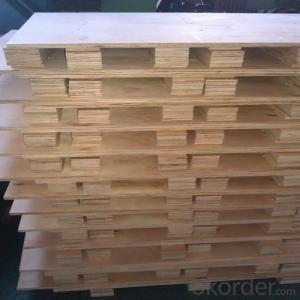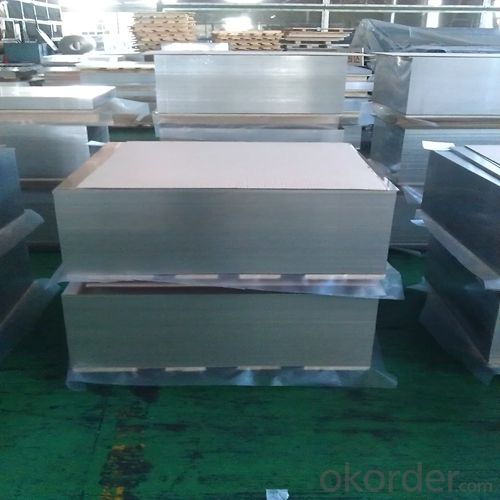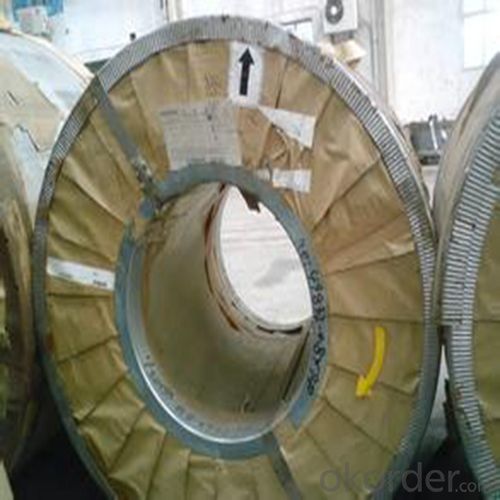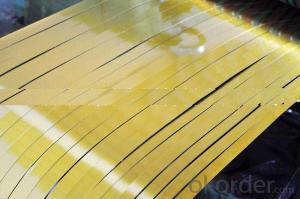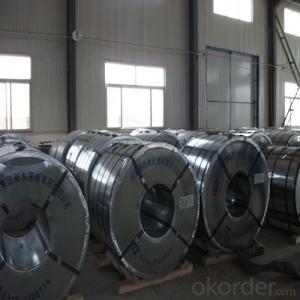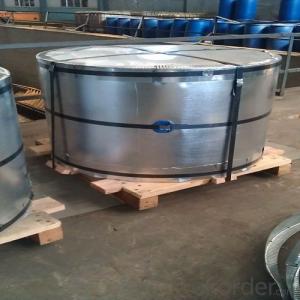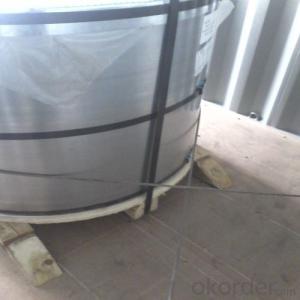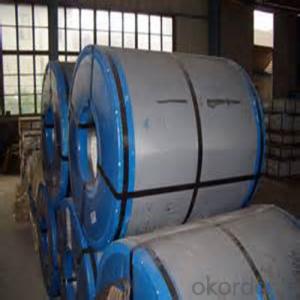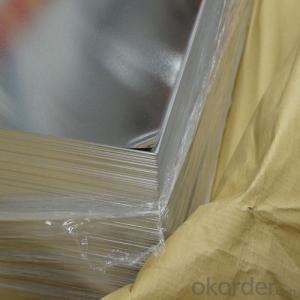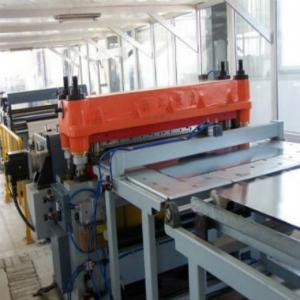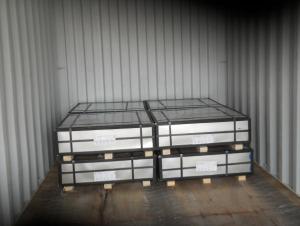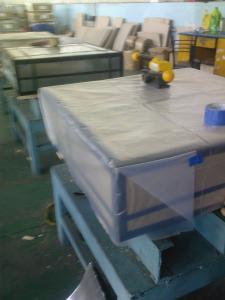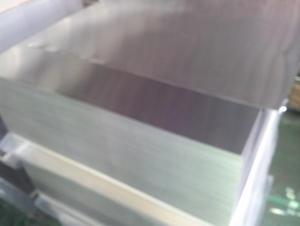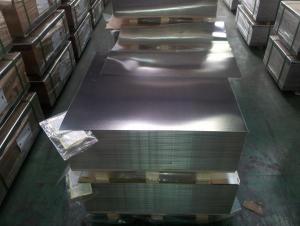Electrolytic Tinplate of High Quality for Metal Package Container 0.165mm Thick
- Loading Port:
- Shanghai
- Payment Terms:
- TT OR LC
- Min Order Qty:
- 50 m.t.
- Supply Capability:
- 15000 m.t./month
OKorder Service Pledge
OKorder Financial Service
You Might Also Like
1.Structure of Electrolytic Tinplate of High Quality for Metal Package Container 0.165mm Thick Description
Electrolytic Tinplate is a thin steel sheet coated by tin. It has an extremely beautiful metallic luster as well as excellent properties in corrosion resistance, solder ability, and weld ability.
2.Main Features of the Electrolytic Tinplate of High Quality for Metal Package Container 0.165mm Thick
Electrolytic Tinplate undoubtedly enjoys the pride of place as a packaging medium especially for food. It owes its unique position to its "nine layer sandwich structure", each of which contributes to its eminence as a packing material. The steel base of electrolytic tinplate provides the necessary strength and formability for can fabrication. The tin-iron alloy layer provides the bond between the steel and free tin layer. The free tin layer is not only responsible for the attractive bright finish and ease of solderability but is also non-toxic- a factor of vital importance in food packaging!
Tinplate is also widely used for making all types of containers such as food cans, beverage cans, and artistic cans, tea cans, painting cans, chemical package cans and dry food package cans, metal printing etc. Its applications are not limited to containers; recently, electrolytic tinplate has also been used for making electrical machinery parts and many other products.
3.Electrolytic Tinplate of High Quality for Metal Package Container 0.165mm Thick Images
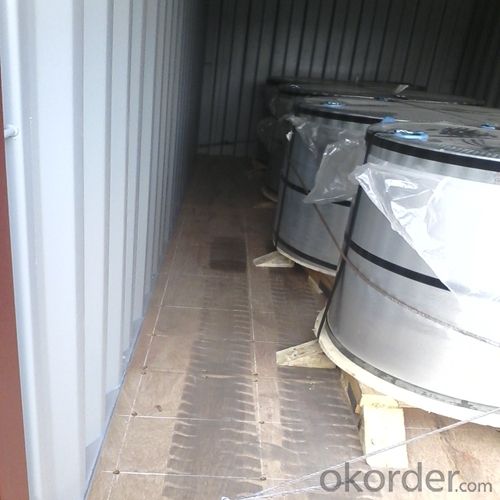
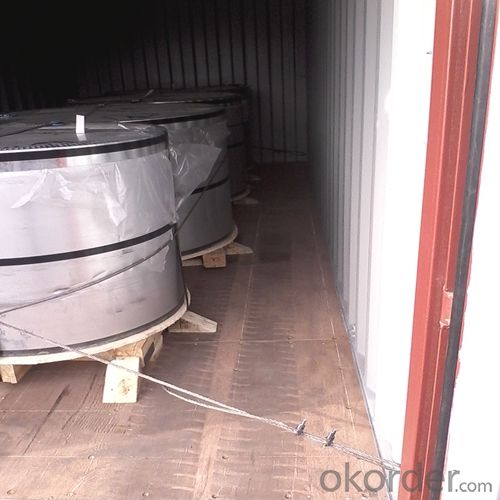
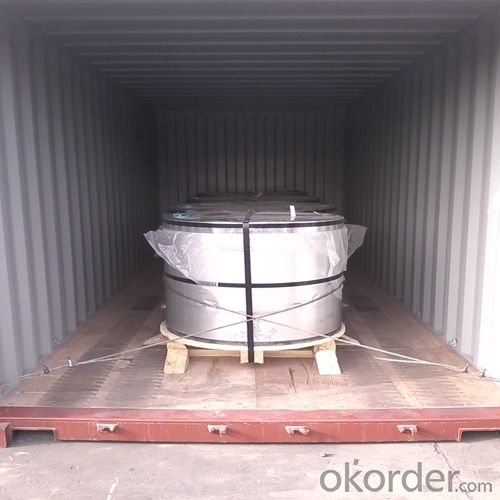
4.Electrolytic Tinplate of High Quality for Metal Package Container 0.165mm Thick Specification
Standard: ISO 11949 -1995
Material: MR
Thickness:0.165mm
Width: 600mm
Temper: T4
Annealing:CA
Coil Inner Diameter: 508mm
Weight: 6-10 tons/coil 1~1.7 tons/sheets bundle
Passivation:311
Oil: DOS
Surface: Finish
5.FAQ of Electrolytic Tinplate of High Quality for Metal Package Container 0.165mm Thick
1. What is the delivery time for your prime quality tinplate?
Usually 35 days after order confirmation.
2. What is your Minimum Order Quantity?
Usually MOQ is 50tons for one single size, for trial order, it can be 25 tons.
3. What is the payment term?
The most common we use is L/C at sight or TT. We can also try use other terms.
- Q: What are the main applications of tinplate in the marine industry?
- Tinplate is commonly used in the marine industry for various applications including the production of cans and containers for storing food, beverages, and other supplies on ships. It is also utilized for manufacturing components such as panels, fittings, and structural parts due to its corrosion resistance and durability in marine environments. Additionally, tinplate is employed in the construction of ship hulls, bulkheads, and decks, providing protection against rust and enhancing the longevity of marine vessels.
- Q: Can tinplate be reused after recycling?
- Yes, tinplate can be reused after recycling. It is a highly recyclable material, and the recycling process involves melting and reshaping it into new tinplate products. This helps in reducing waste and conserving resources.
- Q: How is tinplate recycled?
- Tinplate is recycled through a process known as steel scrap recycling. First, the tinplate is collected and sorted. Then, it undergoes a shredding and melting process to separate the steel from other materials. The melted steel is purified and refined, removing any impurities. Finally, the purified steel is used to produce new tinplate products, completing the recycling cycle.
- Q: Tin can weldingHow can the side of the column of the pop top be welded or pressed?,
- The iron material thickness uniformity in the welding process, welding voltage and high requirement of control, the slightest mistake will cause breakdown or welding point is easy to fall off. As for the production of specific steps, personal suggestions to the scene you see, because the whole process is relatively simple, and when it comes to the production process and principle very boring, tedious. So, if you just want a rough understanding, there is no need for this.
- Q: Can tinplate be soldered?
- Yes, tinplate can be soldered.
- Q: How is tinplate used in the packaging industry?
- Tinplate is commonly used in the packaging industry for a variety of applications. It is used to make metal cans, containers, and lids, providing a durable and protective packaging solution for various products such as food and beverages. Tinplate's excellent corrosion resistance properties and ability to maintain product freshness make it ideal for packaging perishable goods. Additionally, its versatility allows for easy shaping and printing, enabling customized and attractive packaging designs.
- Q: What are the main applications of tinplate in the pet care industry?
- Tinplate is commonly used in the pet care industry for packaging various products such as pet food, treats, and supplements. The main applications of tinplate in this industry include preserving the quality and freshness of pet food, ensuring product safety, and enhancing the overall visual appeal of the packaging.
- Q: Does tinplate corrode over time?
- Yes, tinplate can corrode over time. The tin coating on the steel surface of tinplate can gradually deteriorate due to exposure to moisture, acids, or other corrosive substances, leading to the formation of rust or corrosion.
- Q: What are the advantages of using tinplate packaging?
- There are several advantages of using tinplate packaging. Firstly, tinplate is highly durable and provides excellent protection to the packaged goods, ensuring their safety during transportation and storage. Secondly, tinplate has a high resistance to corrosion, which helps to maintain the quality and freshness of the products for a longer period of time. Additionally, tinplate packaging is lightweight, which reduces transportation costs and makes it easier for consumers to handle. Moreover, tinplate is a sustainable and recyclable material, making it an environmentally friendly choice. Lastly, tinplate packaging is versatile and can be easily shaped, printed, and decorated, allowing for attractive and eye-catching designs, enhancing product visibility and brand appeal.
- Q: What are the different ways to recycle tinplate closures?
- There are several different ways to recycle tinplate closures. One option is to separate the tinplate closures from other recyclable materials, such as glass or plastic bottles, and send them to a recycling facility where they can be melted down and reused to make new products. Another option is to repurpose tinplate closures for crafts or DIY projects, such as creating decorative magnets or jewelry. Additionally, some communities offer recycling programs specifically for tinplate closures, where they can be collected and reused in various ways.
Send your message to us
Electrolytic Tinplate of High Quality for Metal Package Container 0.165mm Thick
- Loading Port:
- Shanghai
- Payment Terms:
- TT OR LC
- Min Order Qty:
- 50 m.t.
- Supply Capability:
- 15000 m.t./month
OKorder Service Pledge
OKorder Financial Service
Similar products
Hot products
Hot Searches
Related keywords
